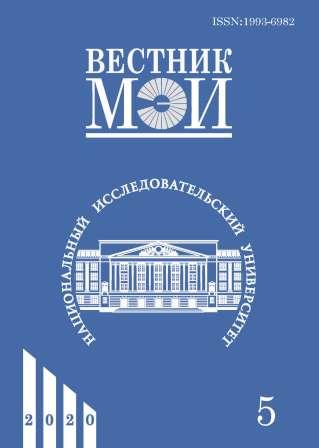Перспективные осмотическая и гибридная электрохимическая электростанции
Аннотация
Рассмотрен спектр энергетических технологий, конечной целью которых является получение электрической энергии. Приводимый перечень источников позволяет изучать их различные комбинации для повышения энергоэффективности новых комплексов. Составлен систематизированный список из 21 известных на сегодняшний день традиционных, нетрадиционных и возобновляемых источников электроэнергии, эффективность (КПД) каждого из которых в отдельности не превышает 50%, кроме некоторых типов энергоустановок на основе топливных элементов (ЭУ/ТЭ). Для указанных видов источников предложены схемы этапов преобразования потоков энергии. Очевидно, что если в той или иной цепочке отсутствуют какие-либо блоки по сравнению с первой классической цепочкой термодинамических циклов тепловых машин, то это значит, что отсутствующие этапы преобразований энергии или реализуются скрытно, или протекают в окружающей среде.
В качестве примера взяты два перспективных источника — осмотическая ГЭС и гибридная энергоустановка (ГибЭУ) на основе высокотемпературных топливных элементов с твёрдооксидным электролитом и ГТУ. По сути, на осмотической ГЭС происходит изъятие затраченной на испарение воды с морских поверхностей солнечной энергии в виде энергии явления осмотического давления при односторонней диффузии молекул речной пресной воды (растворителя) через полупроницаемую мембрану в сторону морской солёной воды (раствора). Осмотическая ГЭС представляет собой сочетание резервуара с полупроницаемыми мембранами и ГЭС. Для первого характерна ожидаемая высокая удельная мощность до 12 кВт на квадратный метр площади полупроницаемых мембран, для второго — самый высокий КПД из всех видов источников электроэнергии и достигнутая высокая удельная мощность до 2…3 кВт на квадратный метр площади поверхности твёрдооксидного электролита.
Литература
2. Канарёв Ф.М. Начала физхимии микромира. Т. 1, 2. Краснодар: Изд-во Кубанского гос. аграрного ун-та, 2009.
3. Твайделл Дж., Уэйр А. Возобновляемые источники энергии. М.: Энергоатомиздат, 1990.
4. Да Роза А. Возобновляемые источники энергии. Физико-технические основы. М.: Издат. дом МЭИ, 2010.
5. Коровин Н.В. Топливные элементы и электрохимические энергоустановки. М.: Изд-во МЭИ, 2005.
6. Справочник по проектированию электрических сетей / под ред. Д.Л. Файбисовича. М.: Изд-во НЦ ЭНАС, 2006. С. 67—68.
7. Костюк А.Г., Шерстюк А.Н. Газотурбинные установки. М.: Высшая школа, 1979.
8. Попель О.С., Тарасенко А.Б., Филипов С.П. Энергоустановки на основе топливных элементов: современное состояние и перспективы // Теплоэнергетика. 2018. № 12. С. 5—23.
9. Бредихин С.И. и др. Стационарные энергетические установки с топливными элементами: материалы, технологии, рынки. М: Из-во НТФ «Энергопрогресс», 2017.
10. Дамаскин Б.Б., Петрий О.А., Цирлина Г.А. Электрохимия. М.: Химия, Изд-во «Колос-с», 2006.
---
Для цитирования: Цгоев Р.С. Перспективные осмотическая и гибридная электрохимическая электростанции // Вестник МЭИ. 2020. № 5. С. 47—53. DOI: 10.24160/1993-6982-2020-5-47-53.
#
1. Poling L. Obshchaya Khimiya. M.: Mir, 1974. (in Russian).
2. Kanarev F.M. Nachala Fizkhimii Mikromira. T. 1, 2. Krasnodar: Izd-vo Kubanskogo Gos. Agrarnogo Un-ta, 2009. (in Russian).
3. Tvaydell Dzh., Ueyr A. Vozobnovlyaemye Istochniki Energii. M.: Energoatomizdat, 1990. (in Russian).
4. Da Roza A. Vozobnovlyaemye Istochniki Energii. Fiziko-tekhnicheskie Osnovy. M.: Izdat. Dom MEI, 2010. (in Russian).
5. Korovin N.V. Toplivnye Elementy i Elektrokhimicheskie Energoustanovki. M.: Izd-vo MEI, 2005. (in Russian).
6. Spravochnik po Proektirovaniyu Elektricheskikh Setey. Pod Red. D.L. Faybisovicha. M.: Izd-vo NTS ENAS, 2006:67—68. (in Russian).
7. Kostyuk A.G., Sherstyuk A.N. Gazoturbinnye Ustanovki. M.: Vysshaya Shkola, 1979. (in Russian).
8. Popel' O.S., Tarasenko A.B., Filipov S.P. Energoustanovki na Osnove Toplivnykh Elementov: Sovremennoe Sostoyanie i Perspektivy. Teploenergetika. 2018;12:5—23. (in Russian).
9. Bredikhin S.I. i dr. Statsionarnye Energeticheskie Ustanovki s Toplivnymi Elementami: Materialy, Tekhnologii, Rynki. M: Iz-vo NTF «Energoprogress», 2017. (in Russian).
10. Damaskin B.B., Petriy O.A., Tsirlina G.A. Elektrokhimiya. M.: Khimiya, Izd-vo «Kolos-s», 2006. (in Russian).
---
For citation: Tsgoev R.S. Promising Osmotic and Hybrid Electrochemical Power Plants. Bulletin of MPEI. 2020;5:47—53. (in Russian). DOI: 10.24160/1993-6982-2020-5-47-53.




